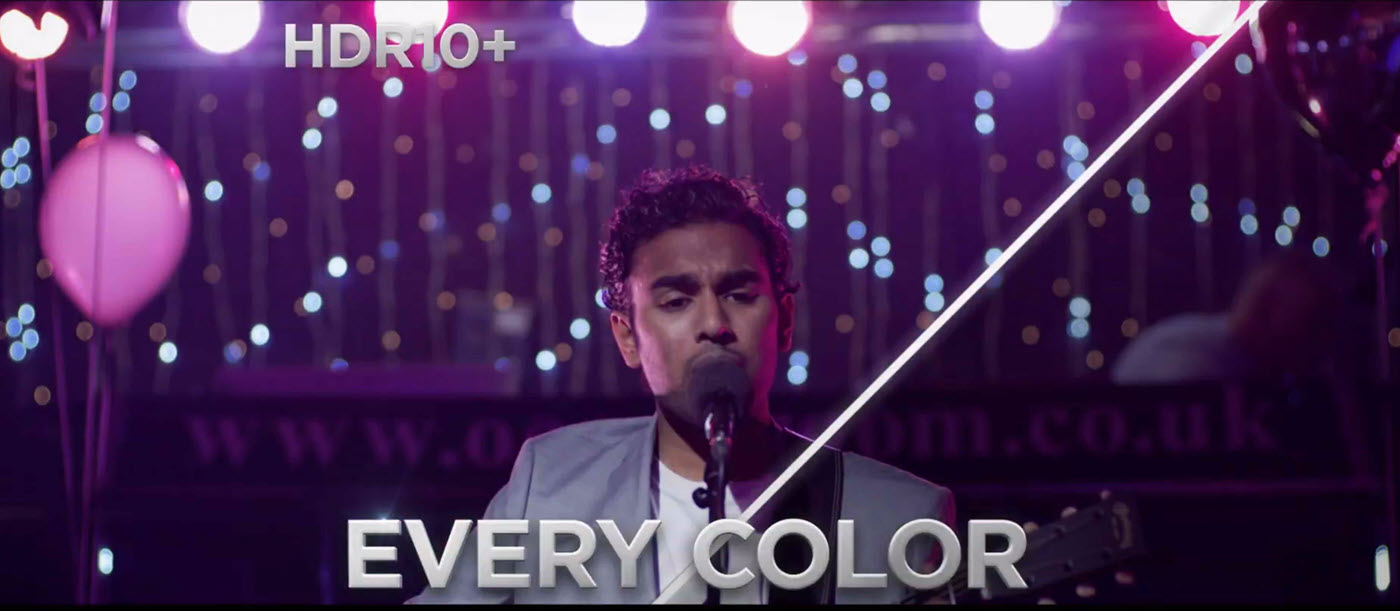What Is HDR10+, and What Does it Mean for Your Home Theater?
Experience video that’s brighter and richer than anything you’ve seen before.
In the acronym-heavy world of TV-picture technology, there’s a new kid on the block: HDR10+. It’s the name of a new standard that offers even more accurate visual reproduction than HDR10, which was itself a significant leap forward.
Developed by a consortium that includes two leading television manufacturers and a major film studio, HDR10+ can go toe-to-toe with Dolby Vision™, previously considered the highest quality consumer video format. So, what exactly is HDR10+, and what does it mean to home theater enthusiasts or movie and TV buffs? Let’s take a closer look.
From One Standard to the Next
To understand HDR10+, it’s helpful to know about its predecessor, HDR10, a video standard that was released by the Consumer Technology Association in 2015. “HDR” is an acronym for High Dynamic Range, a term that refers to the brightness and contrast of a TV display. Don’t confuse it with Ultra-High Definition (which you’ll see as “4K UHD” or “8K UHD”), which references your TV screen’s pixel resolution.
An HDR10-supported TV offers a significantly brighter picture than an SDR (Standard Dynamic Range) TV, which uses a much older brightness standard. In this instance, the term “dynamic range” refers to the difference between the darkest and lightest content in the picture. The wider the dynamic range, the more realistic the picture.
One of the ways science quantifies brightness is with a measurement unit called “nits.” SDR TVs can only support up to 100 nits. HDR10 TVs can handle ten times that amount, while HDR10+ supports brightness of 4,000 nits (4 times that of HDR10).

Getting Meta
Another important aspect of HDR is that its video content contains data instructions, known as “metadata,” which configures the television’s color and brightness to best match the video characteristics. HDR10 supports “static metadata,” which consists of a single burst of metadata that custom-configures the TV for the overall video content being displayed. Dolby Vision takes things a step further with its support of “dynamic metadata,” which is encoded with separate instructions for each scene, thus offering much greater accuracy in terms of brightness and colors over the course of the video.
HDR10+ was developed in large part to compete with Dolby Vision. Not only does it support dynamic metadata, it’s even capable of frame-by-frame metadata, which offers an even higher level of accuracy than Dolby Vision. All in all, HDR10+ provides a picture that’s much closer to a cinema experience than anything currently out there.

There’s one other important difference between HDR10+ and Dolby Vision, and it’s is not a technical one. Like HDR10, HDR10+ is an open-source standard that’s royalty-free. Dolby Vision, on the other hand, requires manufacturers and content creators to pay license fees to use it — something that should give HDR10+ an edge in terms of the number of products that will likely support it in future.
How to Watch HDR10+ Content
Most widescreen televisions support multiple video formats, and many new models include HDR10+ too. If you’re considering upgrading your TV to reap the benefits of this exciting new standard, note that you can already find native HDR10+ content — albeit still in limited quantities — on a growing list of streaming services that includes Amazon Prime Video, Rakuten, and Google Play™ Movies.
Netflix® doesn’t offer HDR10+ content at the moment, but it does support HDR10, so you’d still be able to watch content with extremely high quality because TVs with HDR10+ also support HDR10. In addition, an increasing number of HDR10+ movies are becoming available on Ultra High Definition (UHD) Blu-ray Discs™, though of course you’ll need a Blu-ray player that supports HDR10+ as well.
Great Video Demands Great Sound
If you’re upgrading to an HDR10+-capable TV, you also want to have the best sound possible to match the improved visuals. If you have a home theater, consider getting an AV receiver that’s upgradable to HDR10+. Passing the video signal through such a receiver allows you to distribute the audio through your surround sound system at the highest quality while simultaneously reaping all the visual benefits of HDR10+.
All current Yamaha AVENTAGE AV receivers are HDR10+-compatible. The RX-V4A is a 5.2-channel receiver with 80 watts of power; the RX-V6A is a 100W 7.2-channel unit; and the top-of-the-line RX-V8A is a 150W 11.2-channel receiver. All include Wi-Fi®, AirPlay 2®, Spotify® Connect and voice control, as well as support for the Yamaha MusicCast wireless whole-home audio system and myriad interconnectivity options.


Video technology is getting closer and closer to the day when what we see onscreen is equal to what our eyes see in the real world, in terms of brightness, contrast dimension, depth and colors. HDR10+ is a giant step forward to achieving that goal and one that will significantly improve your home theater experience. If you love watching movies and TV shows, this is one area of high-tech well worth checking out!
For more information, visit www.hdr10plus.org.
Click here for more information about the Yamaha RX-V4A AV receiver.
Click here for more information about the Yamaha RX-V6A AV receiver.















